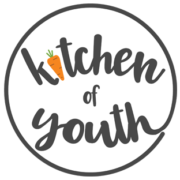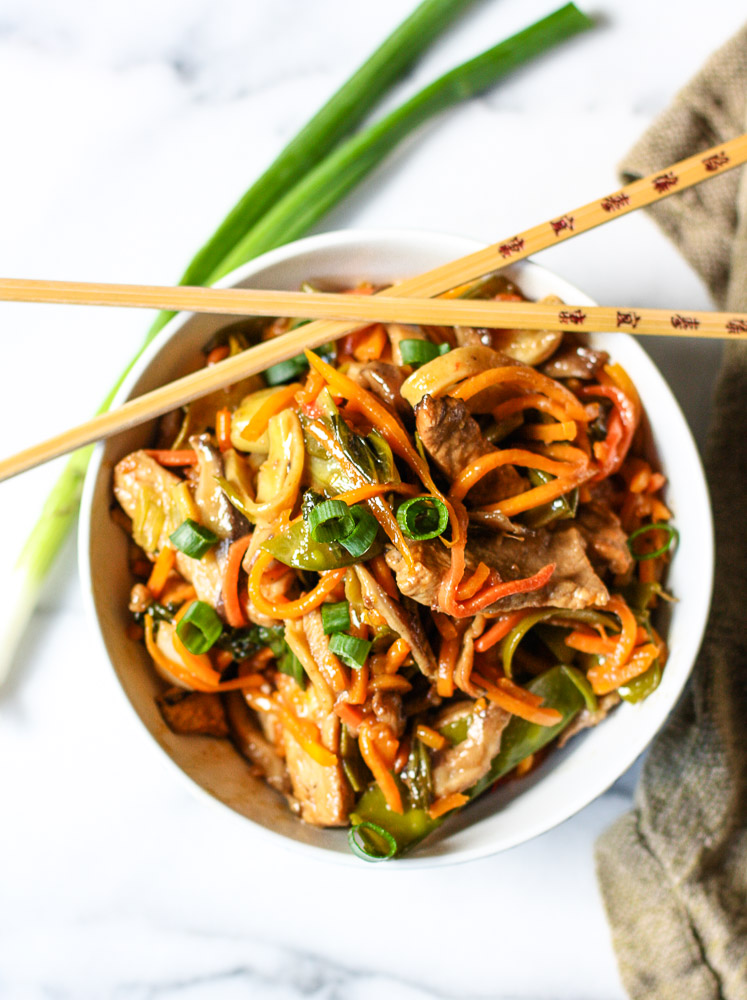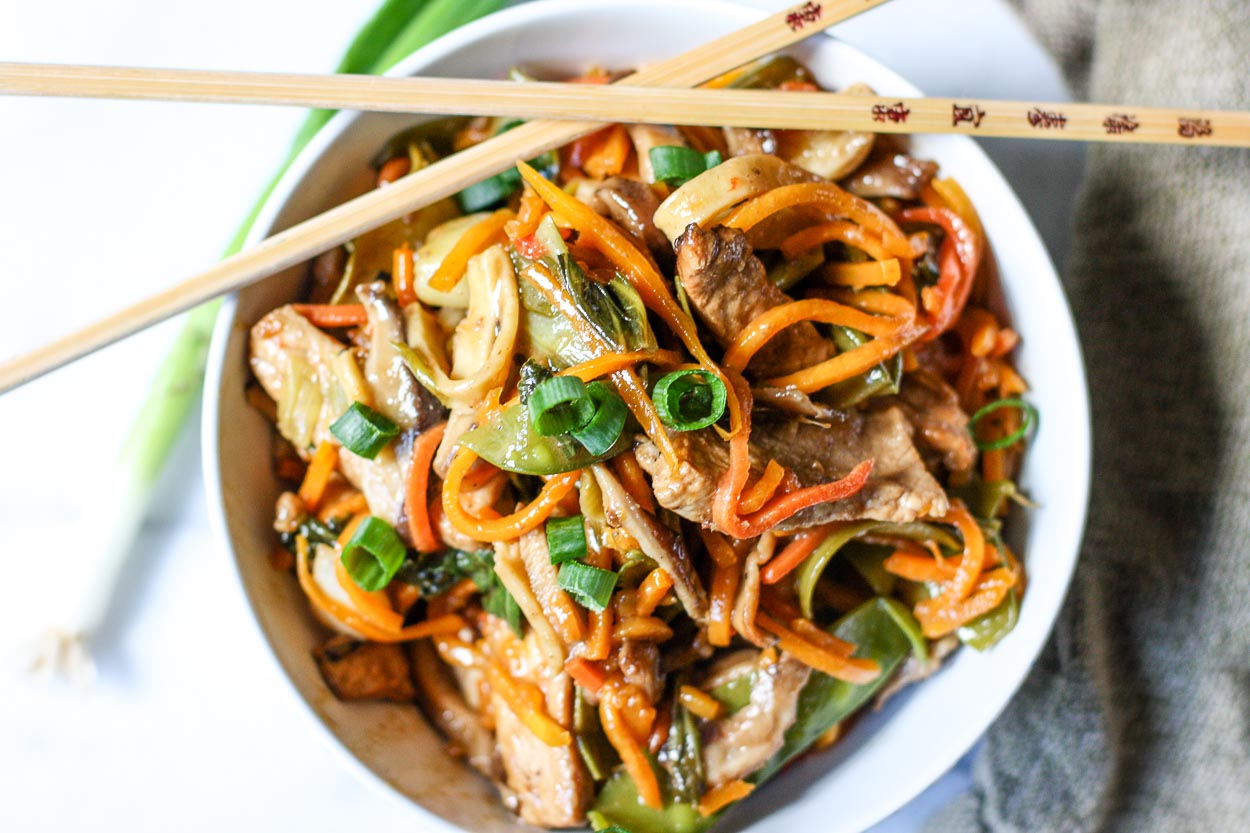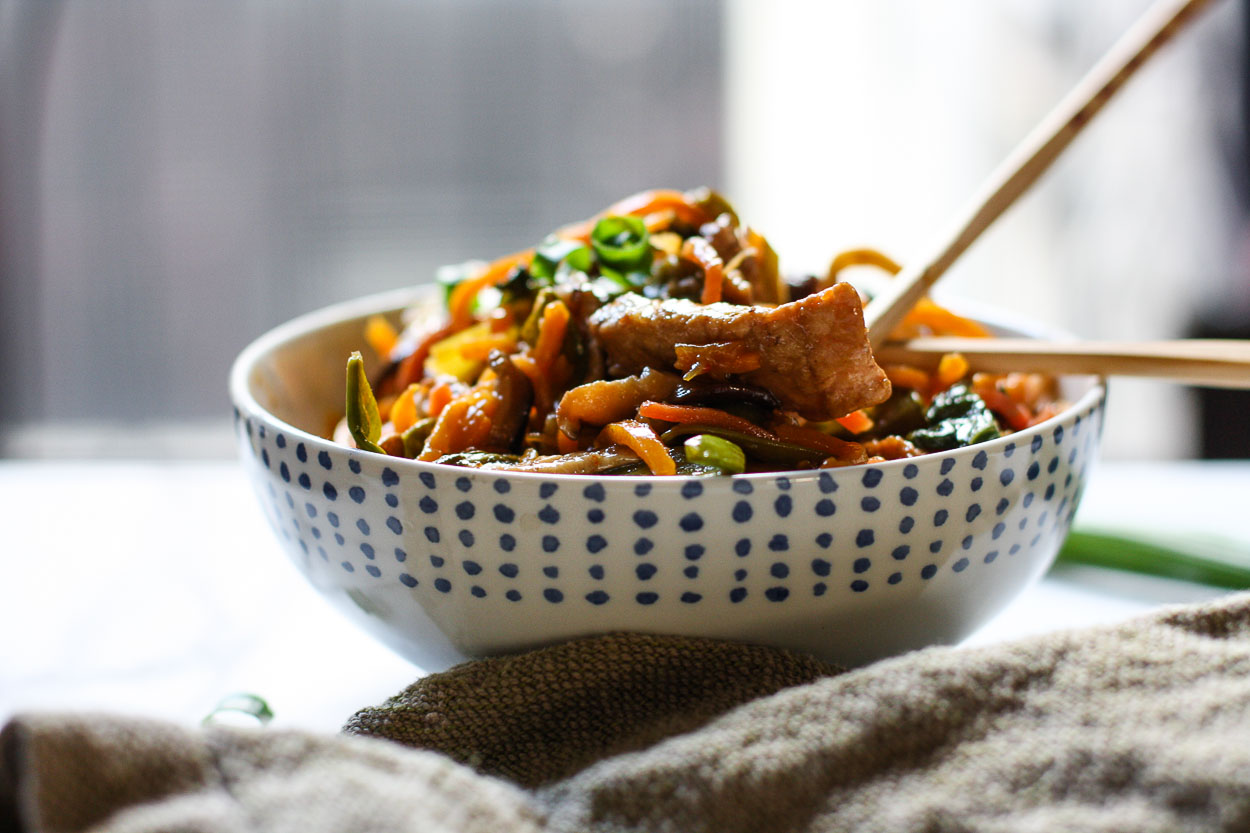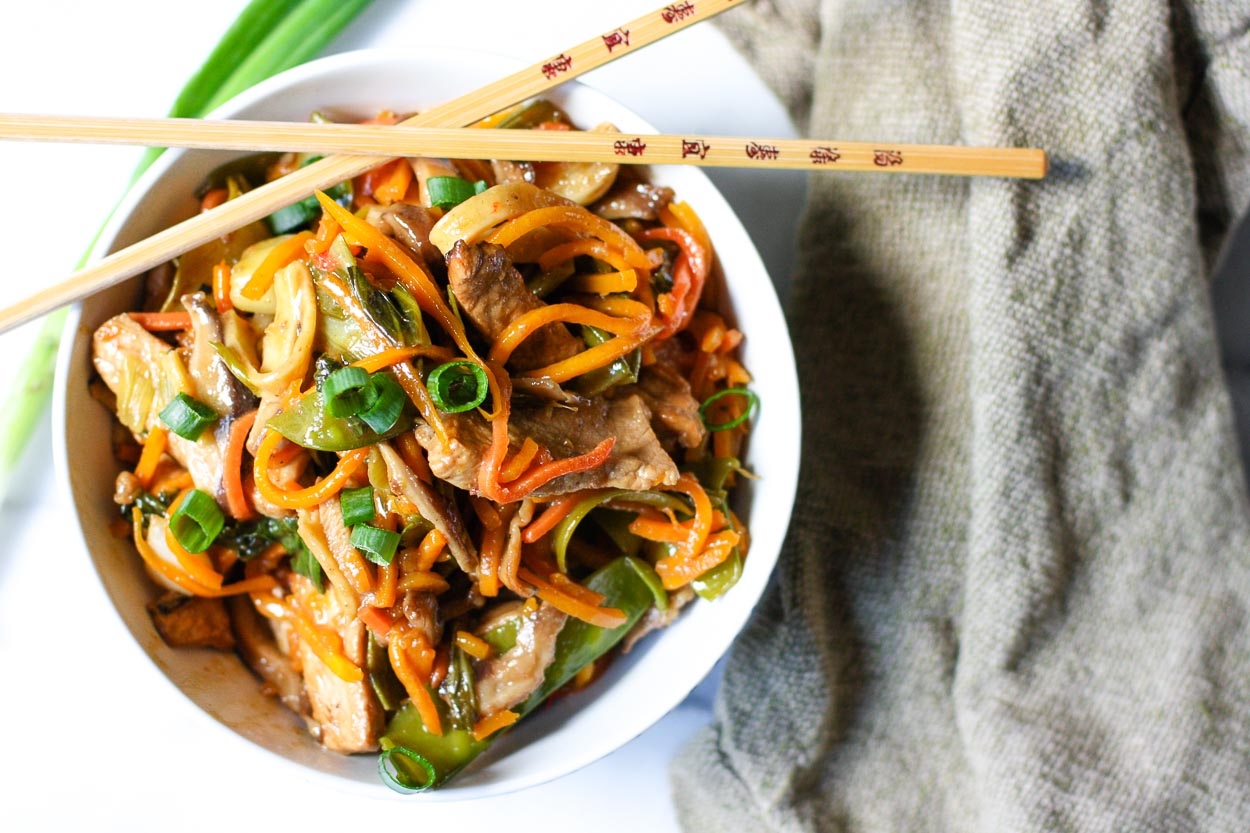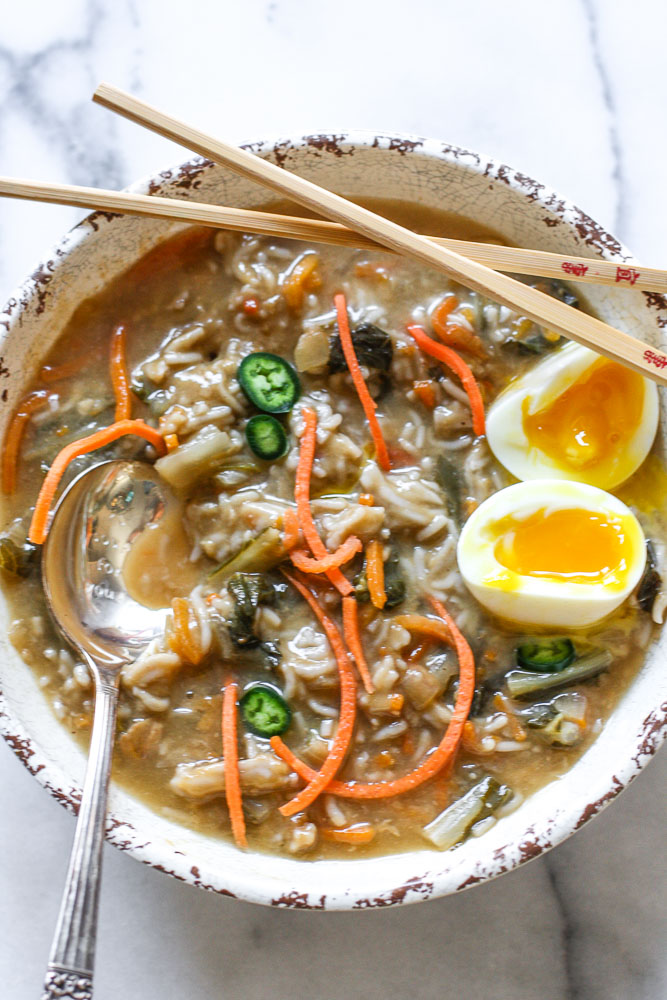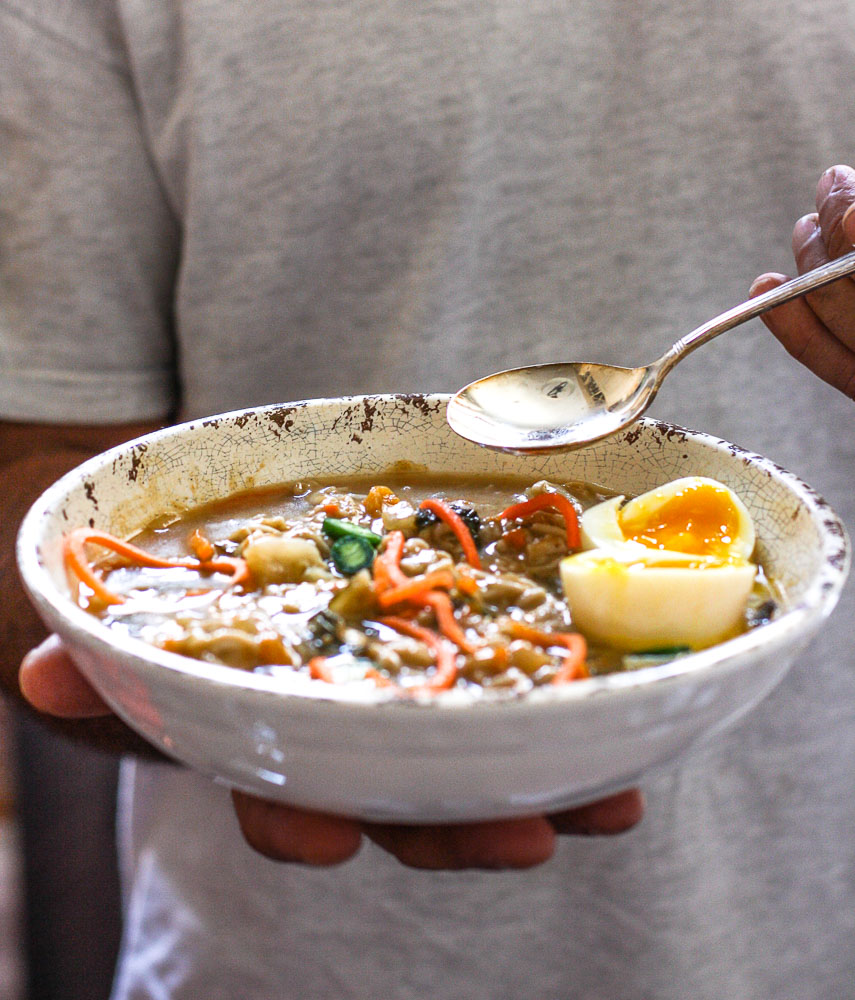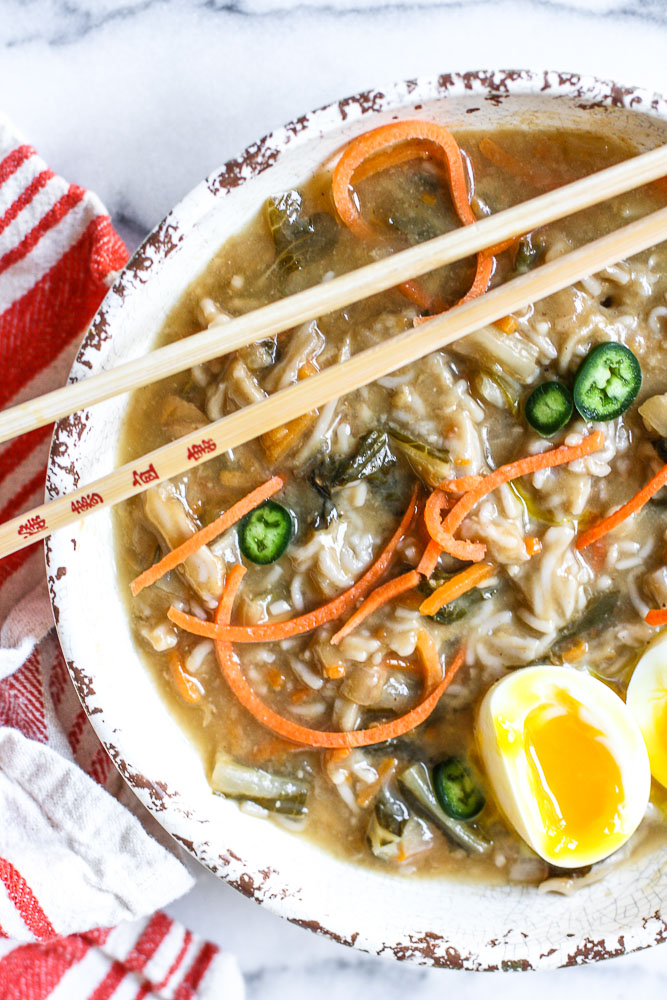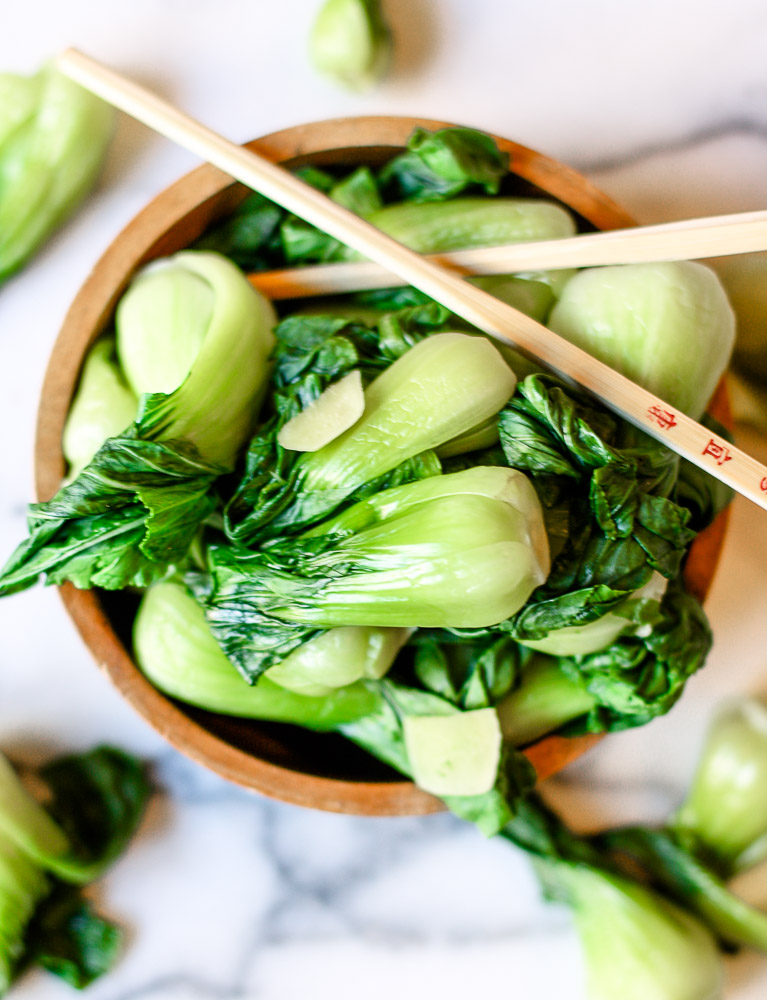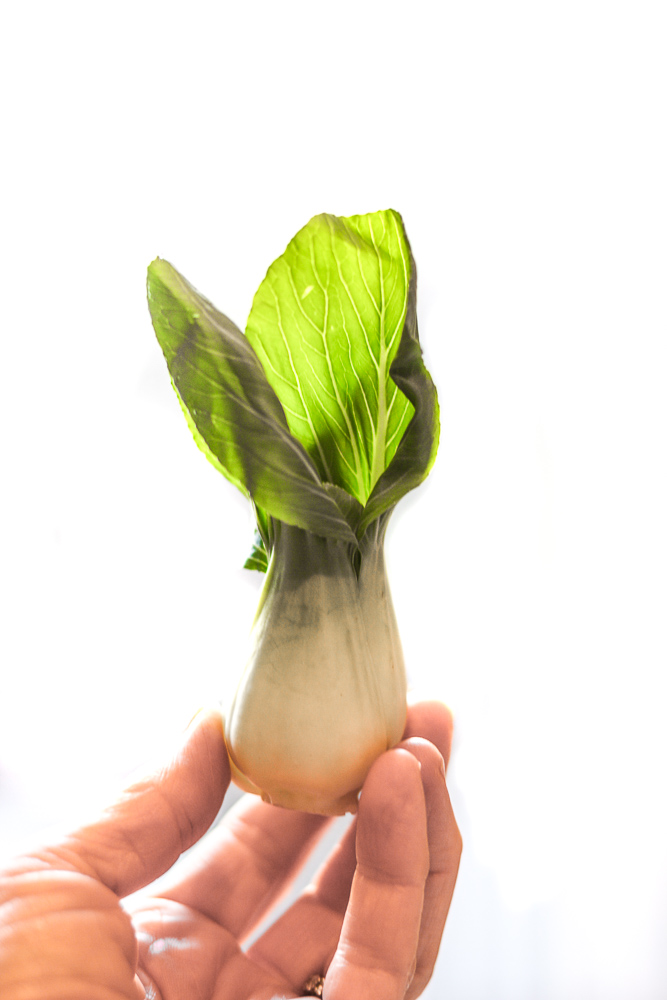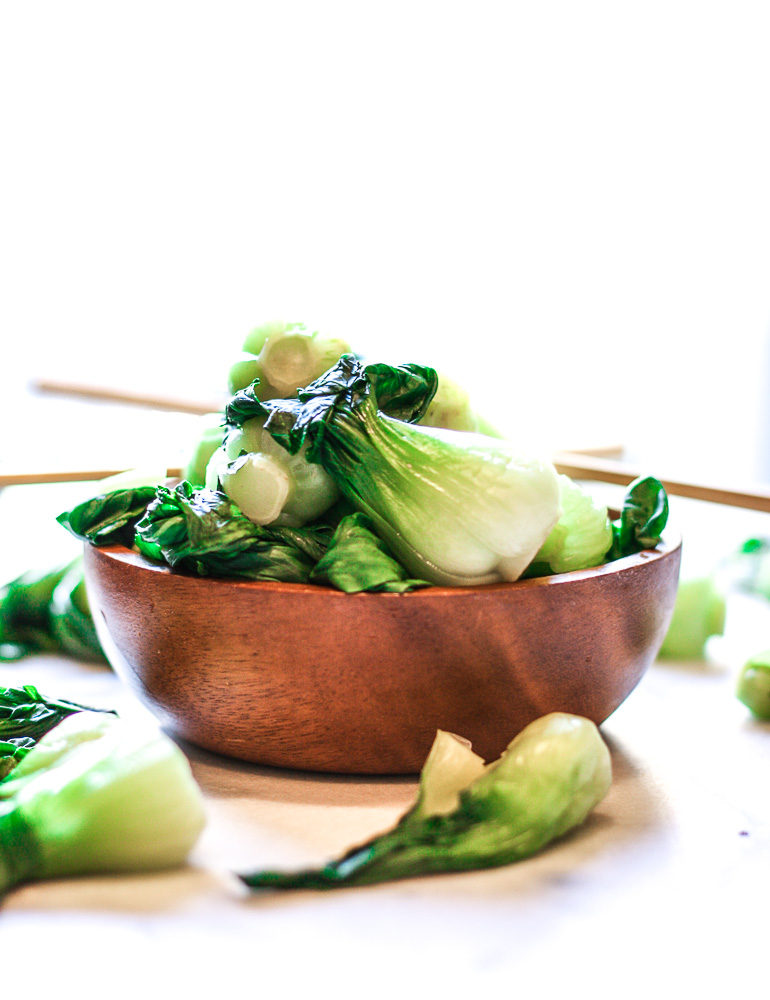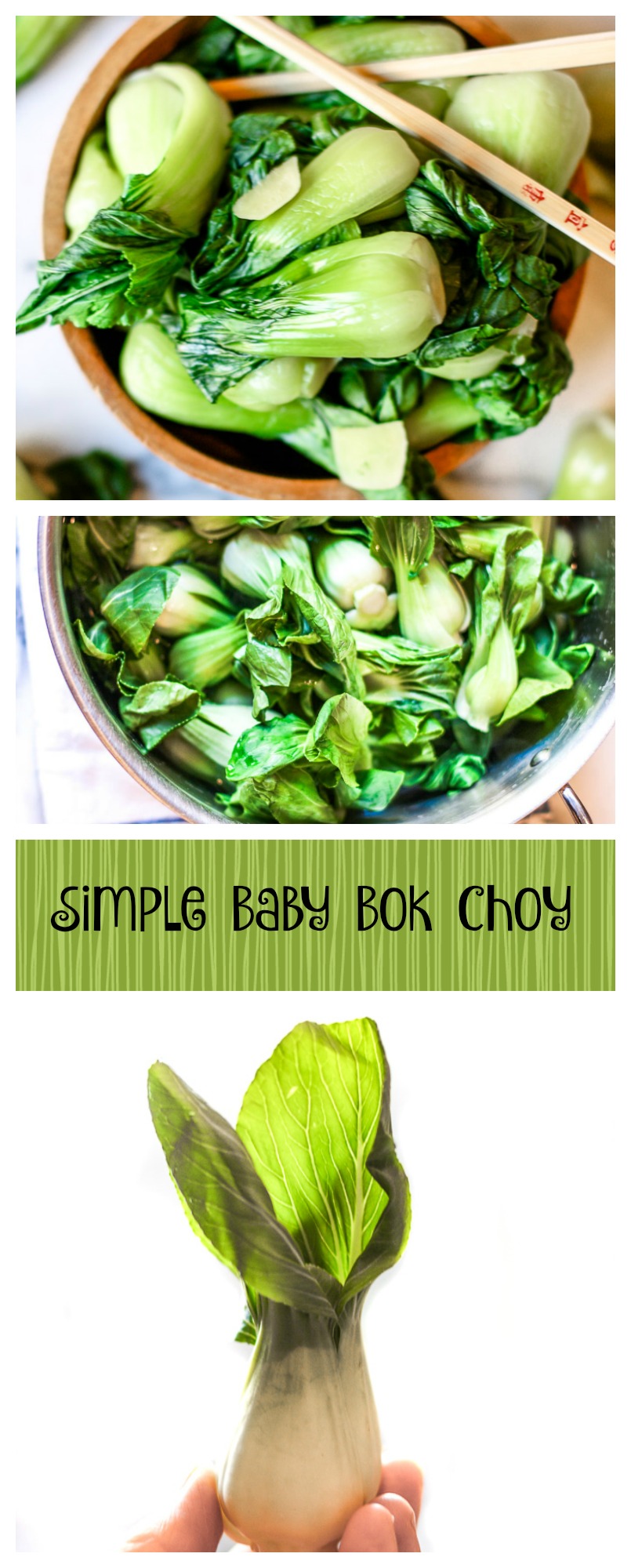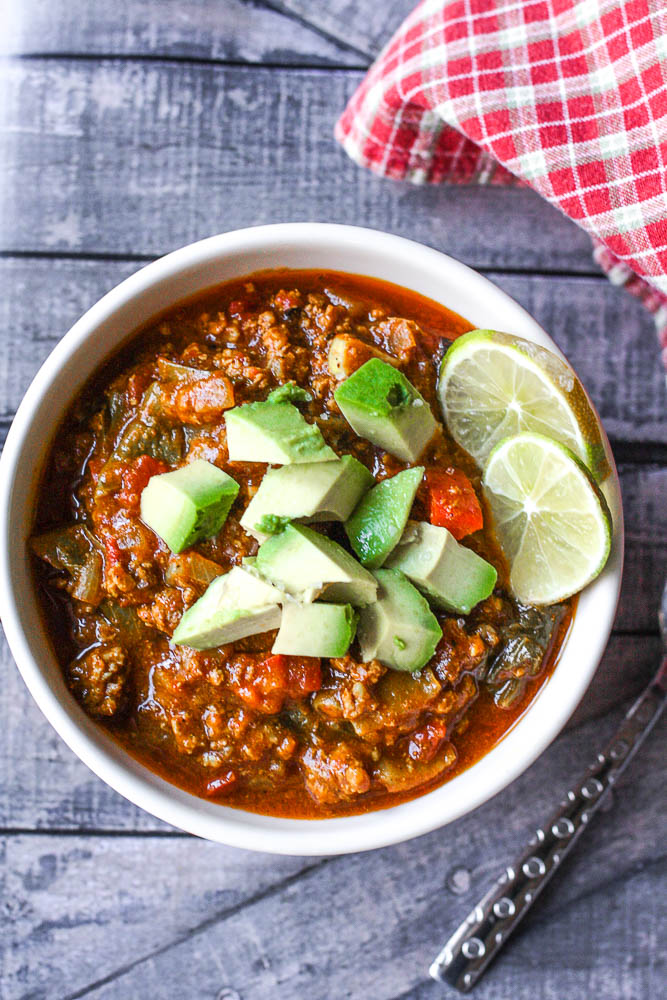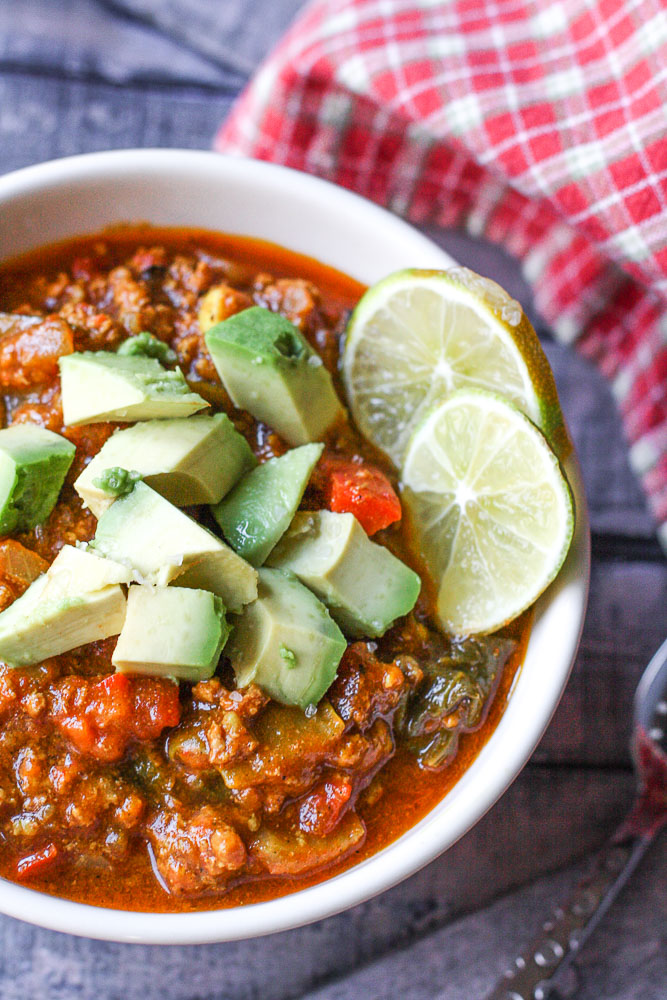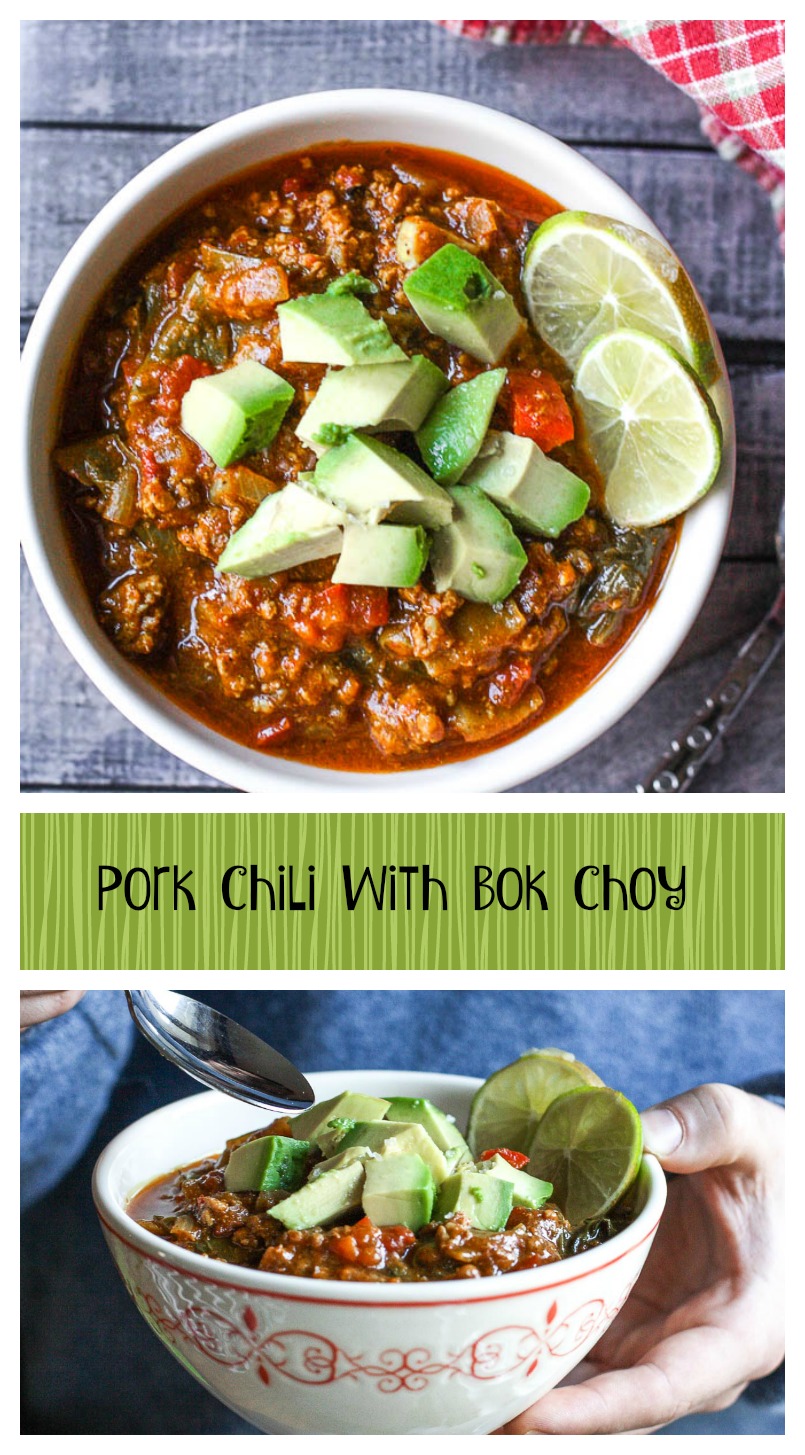Vegan Burrito Bowls
These Vegan Burrito Bowls are healthy and delicious. The taste is incredible — sort of a Mexican-Asian party for your mouth. Oh, and did I mention how easy they are to make…?
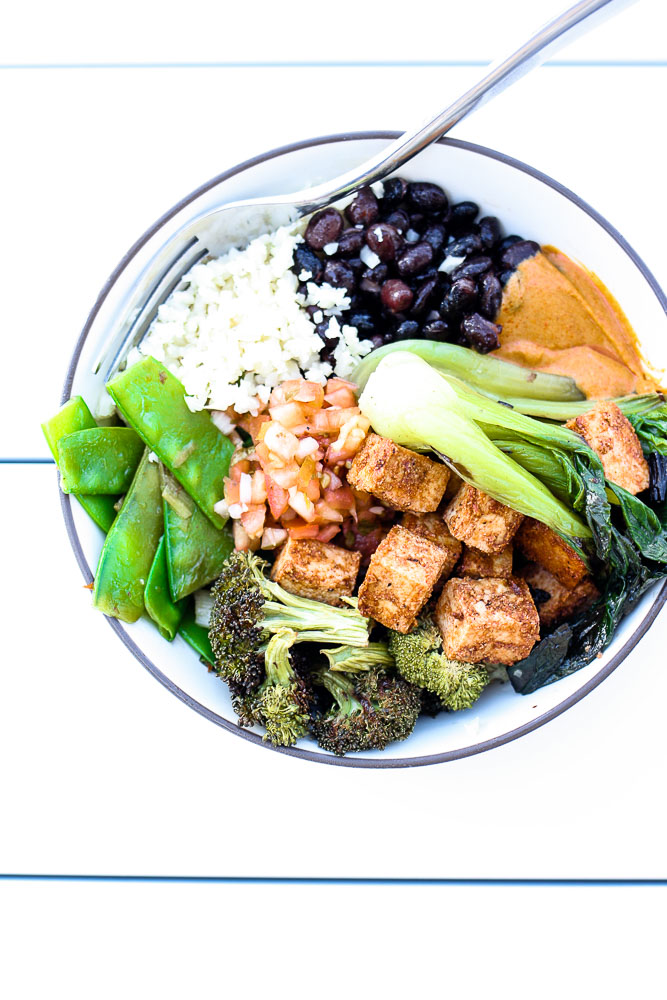
Everything tastes better in a bowl. Everything is easier to make in a bowl. Everything is easier to eat in a bowl. Yes… I love my bowls…
My obsession with food bowls began many years ago, and now it seems it’s an actual real trend. Everywhere you go now, there are various bowls on menus — poke bowls, burrito bowls, Asian bowls, grain bowls, etc.
Have you jumped on the bowl bandwagon at home yet?
If not, this Vegan Burrito Bowl is the perfect starting point.
I’m someone who meal-preps… not for specific meals, but for everyday life. What I mean by this is that when I go to the market with my list (that I invariably don’t follow), and I buy all of the produce that strikes my fancy, when I get home, I like to prep it before I store it in the fridge and on the counter.
I do this not because I’m uber-organized, but because I know myself well enough to know that if I don’t cook, prep, and store it all immediately, by the end of the week I’ll be left with a fridge full of rotting mystery items. I always have big eyes in the market and high expectations of my cooking schedule. And, as the week goes on, I find that life gets in the way, or I end up eating out more often than I thought I would and then I’m left with a boatload of stuff that I don’t know what I’m going to do with.
Here’s a cute article on Why Bowls Are Better Than Plates.
So, what does this have to do with bowls or with this Vegan Burrito Bowl in particular?
Bowls are like artwork. They are like a creative outlet for me. I make them based on what’s in my fridge that’s ready to be eaten. So, whatever veggies I’ve roasted or steamed or sautéed can go into the bowl. Whatever veggie noodles or rices or slices I have cut up can go into the bowl. Avocados often make it into my bowls. Sometimes a fried egg graces the top. Whatever protein I have on hand, that’s going in too.
As to flavors… I love to mix it up. This Vegan Burrito Bowl mixes some Mexican flavors with some Asian flavors — and it is just perfect.
Also, having some favorite condiments in the fridge at all times, makes it really easy to dress the bowl. I’m a big fan of chipotle anything and different salsas so oftentimes my bowls do have a Mexican flare.
Wow, that’s a lot of talk about bowls, and I haven’t even gotten to my favorite thing about them: eating this way allows you to customize a bowl specifically for your specific health needs. And this is an awesome perk. Sometimes I make my bowl to heal a digestive issue and then I’ll make Steve’s bowl with some added stress-reduction foods…

If you want to learn more about how to heal your digestion with foods, download my free ebook here!
And if you are looking for a totally different type of bowl, try my amazing Vietnamese Meatball bowls.
Also, customizing meals for people is my favorite thing to do, so feel free to reach out in the comments below and I’ll be happy to help you work out your optimum bowl.
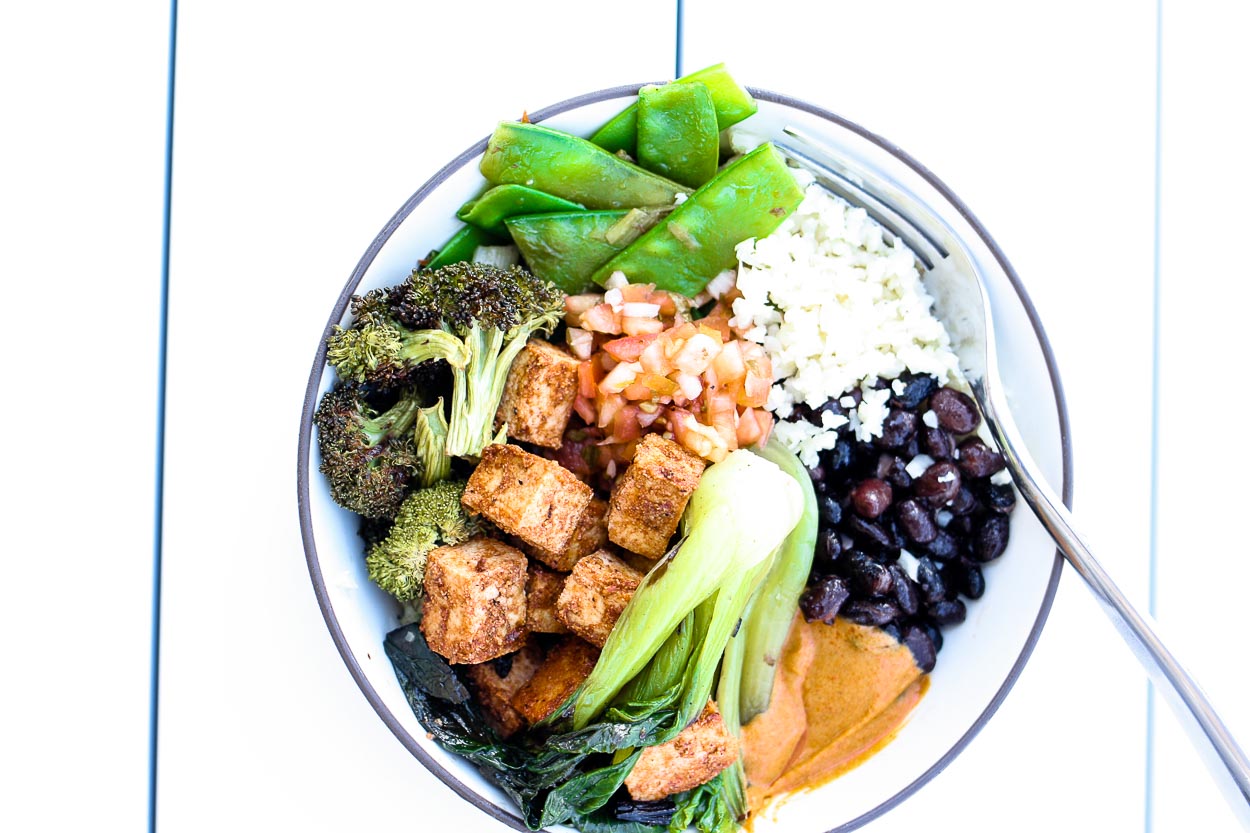
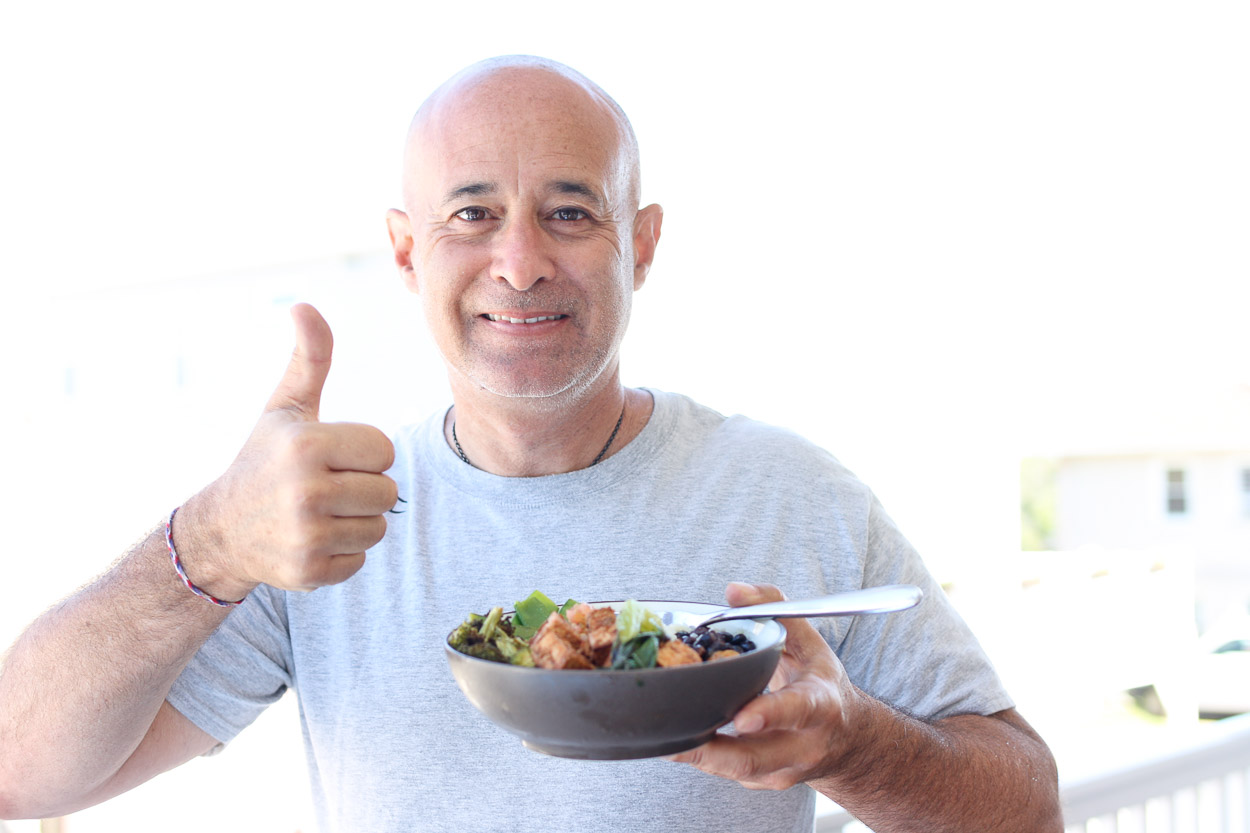
Steve is making a rare appearance here, because he loved his bowl.
Here are some of the amazing ingredients in this Vegan Burrito Bowl:
I used to avoid soy, but after lots of research, I’m happy to say that organic soy products can be really good for you. In this bowl, I’ve used tofu. Tofu can be great for digestion and it also can help provide moisture to dry conditions in the body.
In Chinese medicine, black foods are known as the best foods to strengthen the body and nourish the blood. We recommend them for many people who suffer from chronic lower back pain, knee pain and infertility. Black beans have the highest amount of antioxidants of any bean, they are high in fiber and are good for the heart.
Broccoli has a lot of potassium and is great for brain function; it also has magnesium and calcium to help regulate blood pressure. It’s also good to clear your body of excess heat and it actually can help your vision too. I love foods that make you feel better mentally as well as physically, and broccoli is one of those foods — it can lessen feelings of irritability.
I use cauliflower for breads, crusts, rice… everything. It can be used in so many forms… and, it’s really good for you. In Chinese medicine we use it to aid in digestion and help with constipation. One of the things I find most amazing about this cruciferous vegetable is it’s ability to help with age-related memory loss (My menopausal friends will appreciate this benefit!). It contains a healthy amount of Vitamin B, Vitamin K and Omega-3 fatty acids and can help fight cancer and cardiovascular disease. Cauliflower also helps the body with detoxification and with reducing inflammation. So, as far as I’m concerned, the more the merrier.
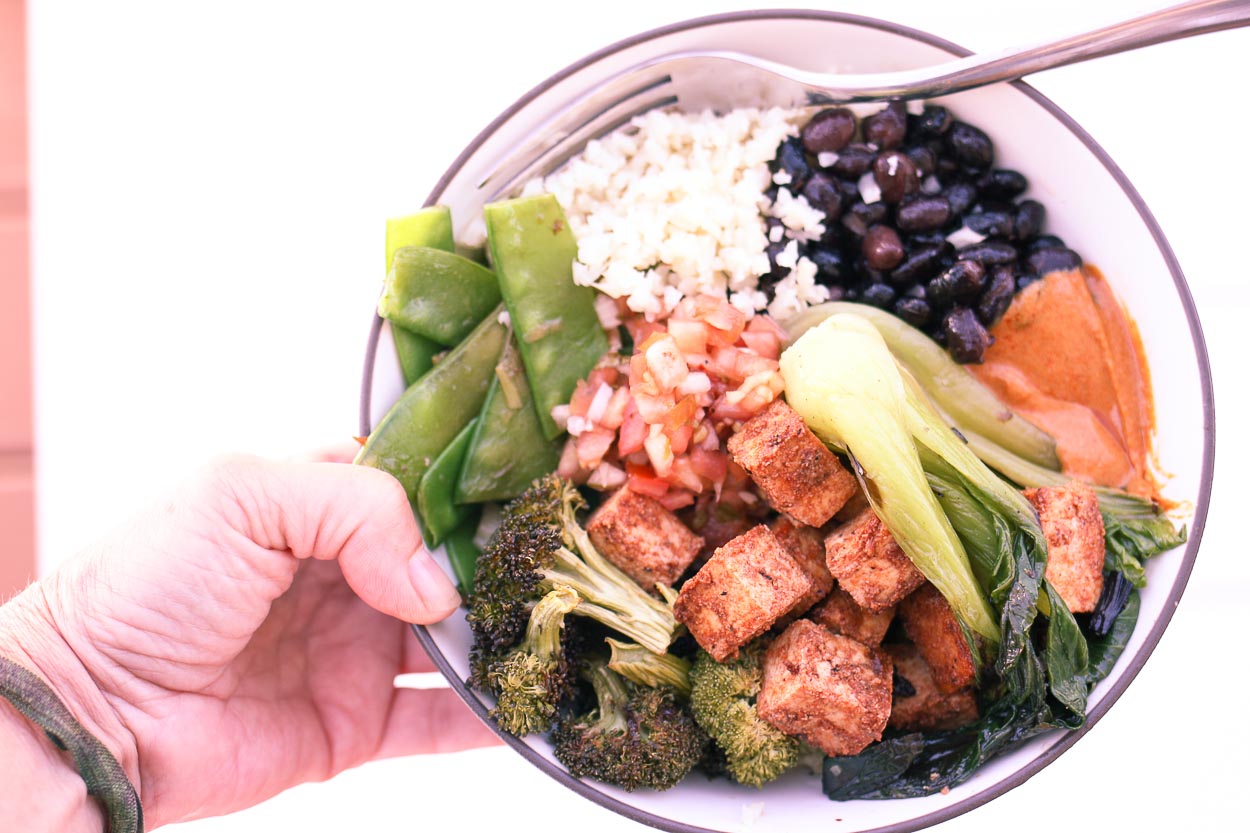
| Vegan Tofu Burrito Bowls | Print |
- 1 recipe Sheet Pan BBQ Tofu
- 1 can black beans, rinsed and drained
- 3 heads baby bok choy, tiny bit of the bottoms cut off, and heads sliced vertically in half or thirds
- 6 garlic cloves, smashed
- 4 Tbs extra-virgin olive oil, divided
- salt and pepper, to taste
- 1 head broccoli, separated into florets, stems sliced
- 4 cups cauliflower rice
- 1 bunch of scallions, sliced
- big handful of pea pods
- My condiments of choice:
- 2 tsphot sauce (or to taste)
- ½ cup pico de gallo
- vegan chipotle sauce
- When I make these bowls, I generally have meal-prepped the ingredients beforehand, and I highly recommend doing this. Here are the instructions for when you have not meal prepped:
- Preheat your oven to 425°F.
- Lay the cut up broccoli on a baking tray covered with parchment paper.
- Drizzle oil over and toss. Season with salt and pepper.
- Roast the broccoli until it is a little charred, about 20 minutes.
- Meanwhile, heat a skillet over medium heat and add 2-Tbs oil.
- Sauce the pea pods until a little bit softened, about 5 mins.
- Remove with a slotted spoon and add the bok choy and the garlic. Season with salt and pepper.
- Saute over med-high heat until it begins to char, then add ¼ cup of water, cover, and cook until done, about 5 mins.
- Remove with a slotted spoon, and then add the cauliflower rice. Season with salt and pepper. Add scallions. Sauce until only slightly cooked -- be careful not to overcook it; it should be only slightly softened, not mushy.
- NOTE: feel free to cook your veggies simultaneously in separate pans.
- To assemble your bowl: lay cauliflower rice in the bottom, and then arrange the tofu, beans, bok choy, and broccoli in sections on top.
- Top with condiments of choice.
- Enjoy!


